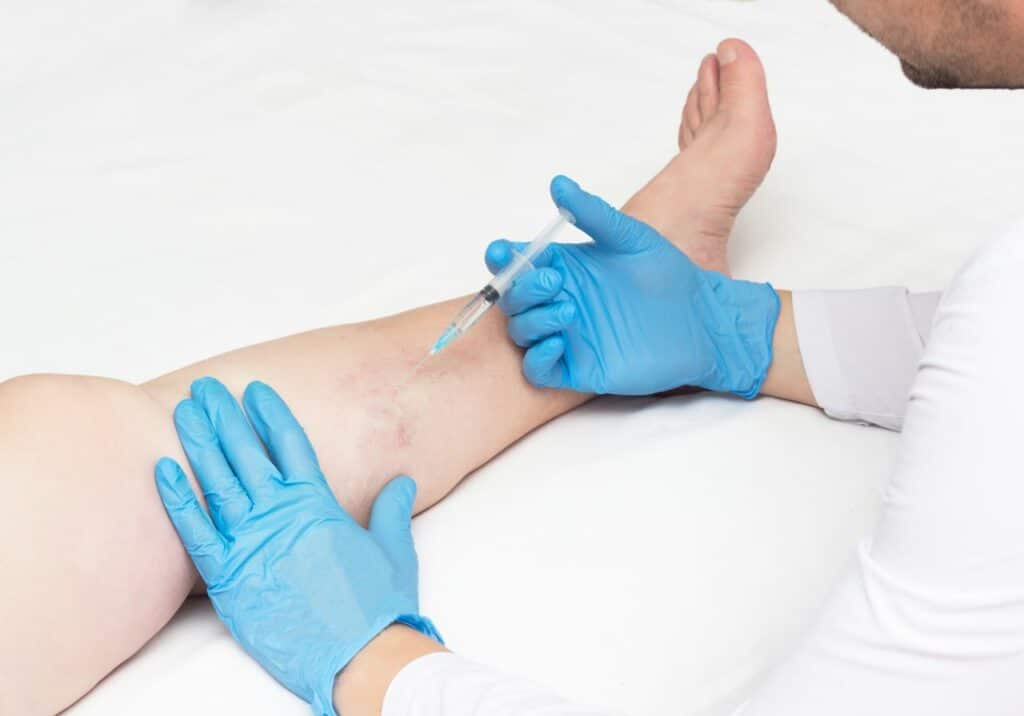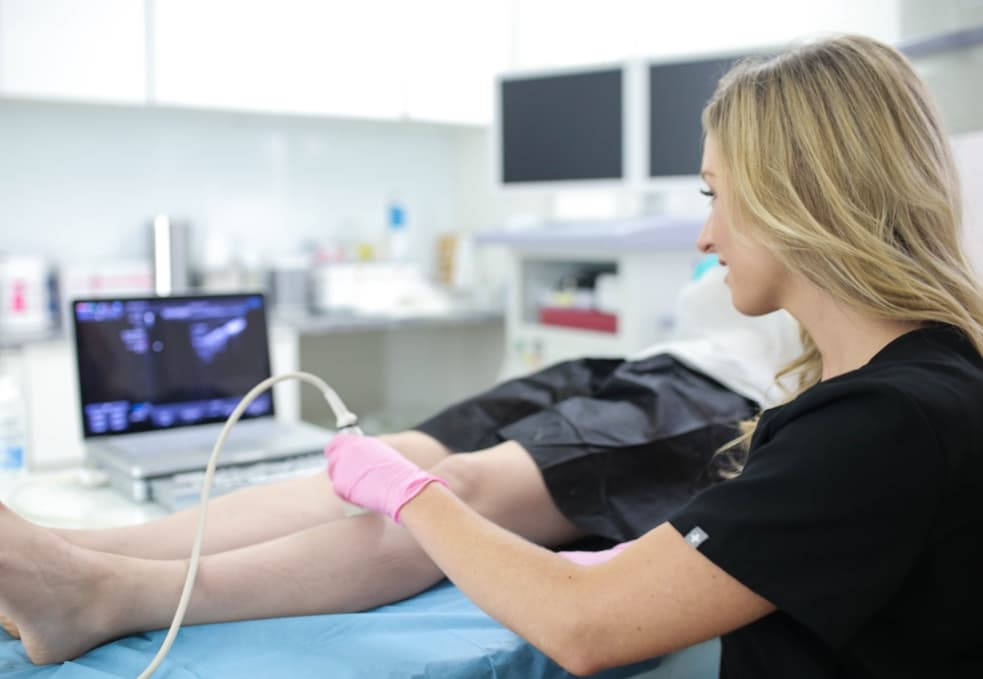Vein mapping, also known as vein mapping ultrasound or vascular ultrasound, is a diagnostic procedure that uses high-frequency sound waves to create detailed images of the veins in the body. This procedure is often used to evaluate and diagnose varicose veins, deep vein thrombosis, and other vein-related disorders. If you or a loved one is considering vein mapping, you may have several questions about the procedure, including how long it takes, how to prepare, and what to expect afterward.
Long Island Vein Center is a group of state-of-the-art vein centers with offices across Long Island. Our vein centers are led by board-certified vein doctors who administer cutting-edge diagnostic techniques, including duplex ultrasound and vein mapping ultrasound, to visualize and identify the root cause of your vein problems. You can find our vein centers in West Islip, Jericho, Hampton Bays, or the Port Jefferson Area, across the street from Mather Hospital. Please schedule an appointment at your nearest vein center.
Here are answers to some of the most frequently asked questions about vein mapping.

How long does a vein mapping take?
Vein mapping typically takes between 30 and 60 minutes to complete, depending on the location and number of veins being evaluated. The procedure is usually performed on an outpatient basis, so you will not need to spend the night in the vein center.
What is the procedure for vein mapping?
Vein mapping is usually performed by a vascular technologist or sonographer trained in ultrasound equipment use. During the procedure, you will be asked to lie on a table and remove any clothing or jewelry that may interfere with the ultrasound. The technologist will then apply a clear gel to the skin over the examined area, which helps transmit the sound waves more effectively.
Next, the sonographer will use a handheld transducer to send sound waves through your skin and the veins. The transducer sends back echoes of the sound waves, which are then used to create a detailed image of the veins on a computer screen. The technologist may move the transducer over different parts of the body to get a complete view.
How do you prepare for a vein ultrasound?
To prepare for a vein ultrasound, wear loose, comfortable clothing and avoid eating or drinking anything for at least four hours before the procedure. You should also inform the technologist and vein doctor of any medications you are taking, as some medications can affect the accuracy of the ultrasound.
Is vein mapping ultrasound painful?
Vein mapping ultrasound is generally not painful. You may feel a slight pressure when the transducer is applied to your skin, but this should not be uncomfortable.
How long does it take to get results from a vascular ultrasound?
The results of a vein mapping ultrasound are usually available within a day. The vein doctor will review the images, interpret the results, visualize the direction of blood flow in your leg veins, determine if you have chronic venous insufficiency, and curate a personalized minimally invasive vein treatment plan to improve optimal blood flow.
What happens after vein mapping ultrasound?
After the vein mapping procedure, you can resume your normal activities. You may be asked to wear compression stockings or take other measures to improve circulation in the affected area. Your vein doctor will discuss any recommended treatment options with you based on the results of the vein mapping ultrasound.
What are my minimally invasive treatment options?
Varicose veins and spider veins are common issues that many people face. These swollen veins can be unsightly and cause discomfort and other symptoms, such as aching, swelling, and fatigue. Furthermore, if you’re diagnosed with chronic venous insufficiency after vein mapping, you may need advanced treatments to address the condition’s root cause. Minimally invasive procedures have become increasingly popular due to their simplicity and convenience.
Radiofrequency Ablation
Radiofrequency ablation is a minimally invasive procedure that uses radiofrequency energy to heat and close the damaged veins. During the procedure, a small catheter is inserted into the vein through a small incision. The catheter emits radiofrequency energy, which heats the walls of the vein and causes them to collapse and seal shut.
Endovenous Laser Ablation
Endovenous laser ablation is a minimally invasive procedure that uses laser energy to close the damaged veins. During the procedure, a small laser fiber is inserted into the vein through a small incision. The laser energy is then directed at the walls of the vein, causing them to collapse and seal shut.
VenaSeal
VenaSeal is a minimally invasive procedure that uses a medical adhesive to close the damaged veins. During the procedure, a small catheter is inserted into the vein through a small incision. The catheter delivers a small amount of medical adhesive, which seals the vein shut.
Sclerotherapy
Sclerotherapy is a minimally invasive procedure that involves injecting a solution into the damaged veins to cause them to collapse and seal shut. The solution is usually a detergent-like substance that irritates the walls of the vein, causing them to scar and close.
Ambulatory Phlebectomy
Ambulatory phlebectomy is a minimally invasive procedure that involves removing the damaged veins through small incisions in the skin. The procedure is usually performed in the vein doctor’s office and takes about an hour to complete.
Compression Stockings
Compression stockings are a non-invasive treatment option for varicose veins and spider veins. These stockings apply pressure to the legs to improve circulation and reduce swelling. They are usually worn during the day and can be removed at night.

